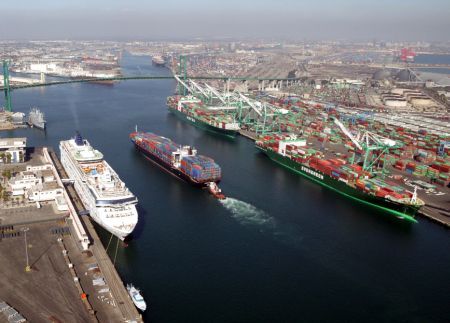
Among a number of 26 different discharges incidental to the normal operation of commercial vessels regulated by the Vessel General Permit (VGP), treated ballast water becomes a key element of compliance for ship operators trading in US waters.
The National Pollution Discharge Elimination System (NPDES) has been established in the context of the Clean Water Act (CWA), under which certain incidental discharges from ships might be carried out with the 3 nautical mile territorial sea of the United States, provided that an authorization has been granted to the vessel following the submission of a Notice of Intent.
On March 28, 2013, the United States Environment Protection Agency released the second set of VGP regulations, (2013 Vessel General Permit) that will officially enter into force on 19 December 2013, a date that the existing permit and authorization to discharge expires. There are many requirements for new ships (ships built after December 19, 2013) including the monitoring of bilge water, the use of environmentally accepted lubricants in all oil-water interfaces of the vessel, the gray water monitoring and many other for all ships relating to the reporting to EPA, recordkeeping and training of ships’ personnel.
However, the most critical element of the 2013 Vessel General Permit is the procedure required from ship operators to demonstrate that their vessels, after have been fitted with a ballast water treatment system, continue to comply with the effluent limits and the associated requirements on: a) Functionality Monitoring, b) Biological Monitoring and c) Residuals Monitoring.
The US EPA has established technology-based numeric effluent limits for the discharge of living organisms equivalent to the U.S. Coast Guard discharge standard (USCG, 2012, 33 CFR 151.1511 and 151.2030), which is equivalent to the IMO D2 standard. The Agency has established the VGP discharge limits because various treatment technologies have been shown to be safe, reliable and effective at reducing viable living organisms in ballast water discharges to meet these limits.
Furthermore, it has been demonstrated that these technologies are commercially available for shipboard installation and their use is economically achievable. The combination of technologies of the Erma First Ballast Water Treatment System (filtration in hydrocyclone and electrolysis of sea water) is one of these technologies that EPA and other relevant US scientific bodies have identified as being effective, safe, reliable and environmentally friendly.
EPA has also adopted the USCG time schedule of installation of ballast water treatment systems onboard ships, as follows:
To discharge ballast water in the US territorial zone, a vessel must be using a treatment system that has been type approved by the USCG under 46 CFR Part 162.060 or received “Alternative Management System” designation by the USCG under the 33 CFR 151.2026. Additionally, following the installation of a ballast water treatment system, the Master of the vessel operating in US waters must maintain the system in accordance with the all manufacturer specifications.
In addition to the installation of an approved ballast water treatment system, monitoring requirements, divided into the following, three components have been included in the 2013 Vessel General Permit:
a) functionality monitoring, at least monthly, of certain parameters depending on the treatment process employed as well as periodical calibration of all sensors and control equipment, either onboard the vessel or ashore,
b) effluent biological monitoring, twice per year or one per year depending on the results (if they are below permit levels for two consecutive years, then monitoring can take place annually after the first year out of the five in total that the permit is valid), and
c) initial and maintenance monitoring of residual biocides and other secondary by-products used or generated during the treatment. When discharging treated ballast water, these residual compounds must not exceed certain limits determined by the EPA, dependable again on the treatment process. In the case of the Erma First Ballast Water Treatment System, chlorine is the only residual derivative that must be monitored in the effluent with the instantaneous permissible limit to be 100 μg/l.
We use cookies to improve your experience. By continuing to use our site, you accept our Cookies, Privacy Policy,Terms and Conditions. Close X